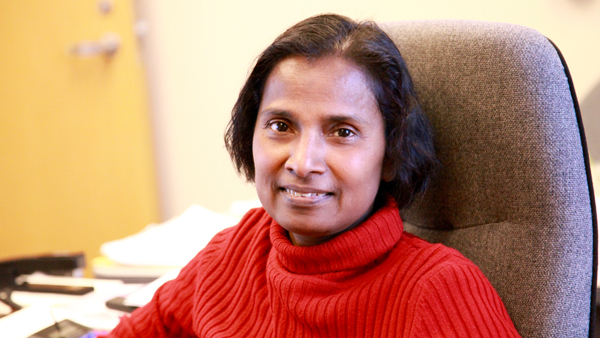Oklahoma State University associate professor of chemistry Dr. Smita Mohanty was elected Chair of the Oklahoma chapter of the American Chemical Society.
A member of the OSU Department of Chemistry since 2014, Mohanty received her B.S. in chemistry in 1981, M.S. in chemistry in 1983, and Ph.D. in organic chemistry in 1988 from the University of Delhi, India. She held postdoctoral positions at the University of Washington and at Albert Einstein College of Medicine. She was a faculty member at SUNY Stony Brook and Auburn University before joining OSU. 
Mohanty said she was always drawn to science and credits her parents with gifting her age-appropriate books on famous scientists like Galileo and Einstein. After earning her Ph.D., Mohanty chose to move from pure chemistry to biochemistry and that change in focus brought her to the United States.
At the University of Washington, Mohanty centered her research on proteins, specifically by using Nuclear Magnetic Resonance (NMR).
“I love proteins,” Mohanty said. “They are amazingly beautiful molecules and the way they do their job is even more fascinating.”
The NMR instrument produces 3-D imaging of proteins, which allows scientists such as Mohanty to study their structure. She currently is studying several different proteins. Her research on pheromone-binding proteins may help develop better and safer pest control methods by manipulating pheromones specific to that pest. Additionally, she studies an enzyme that helps particular proteins function properly. If the enzyme does not do its job, a series of disorders called CDGs (congenital disorders of glycosylation), which include developmental delay, hypoglycemia, gastrointestinal problems, and possibly others, may occur.
To aid in these projects, Mohanty and her colleagues have applied for a National Science Foundation grant to obtain a new, 800 mhz NMR instrument. The current model is 600 mhz and nearing the end of its projected lifespan. The new NMR instrument would be the most powerful of its kind in the region.
“I am always optimistic,” Mohanty said. “If you ask me our chances of getting the grant, I’d say 200-percent!”
As she wraps up her second year at OSU, Mohanty’s general optimism and enthusiasm for her current position come through loud and clear. Not only is she able to pursue her interest in structural chemistry but she also enjoys the cultural diversity inside the chemistry department.
“I felt right at home,” Mohanty said.
